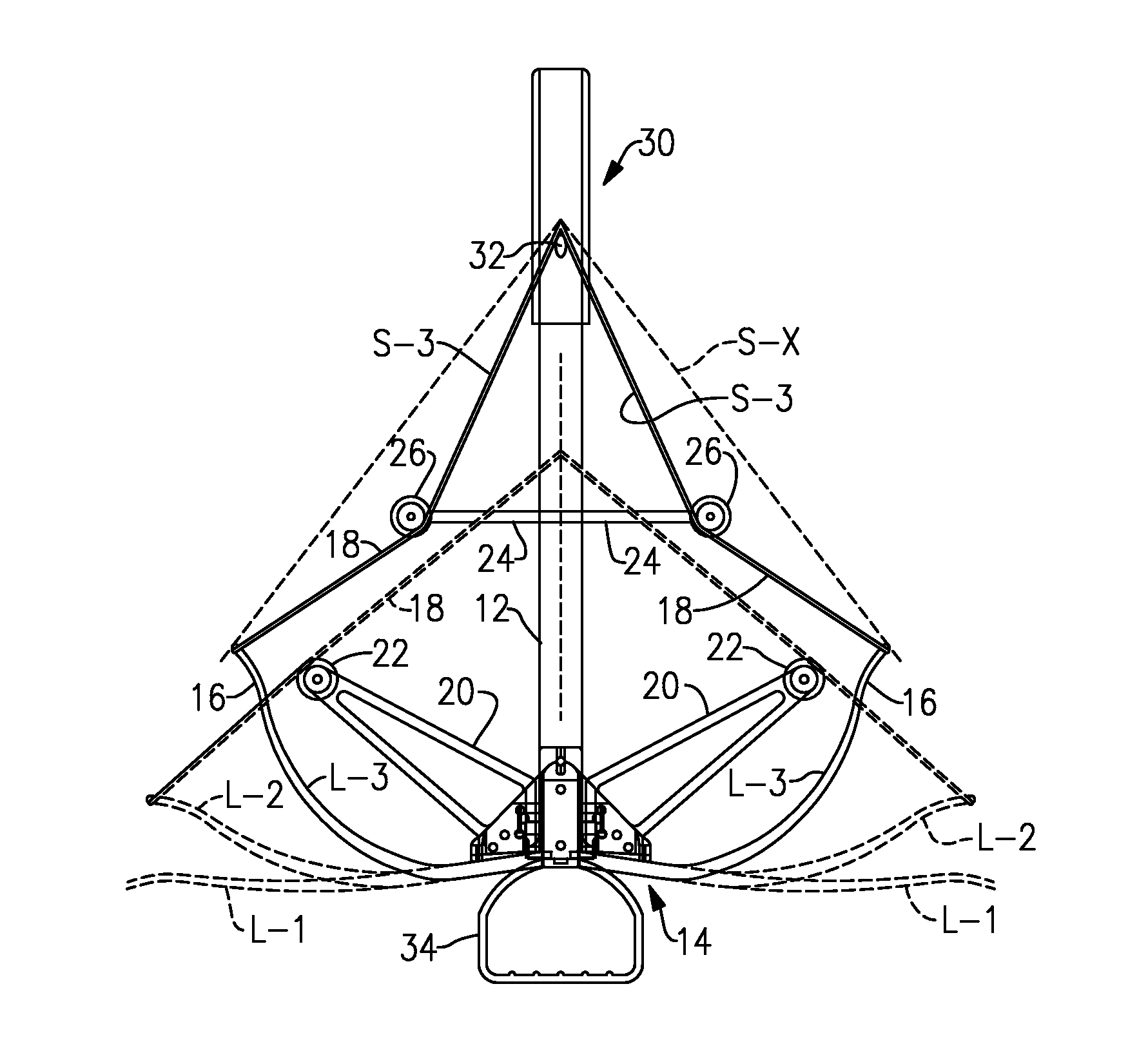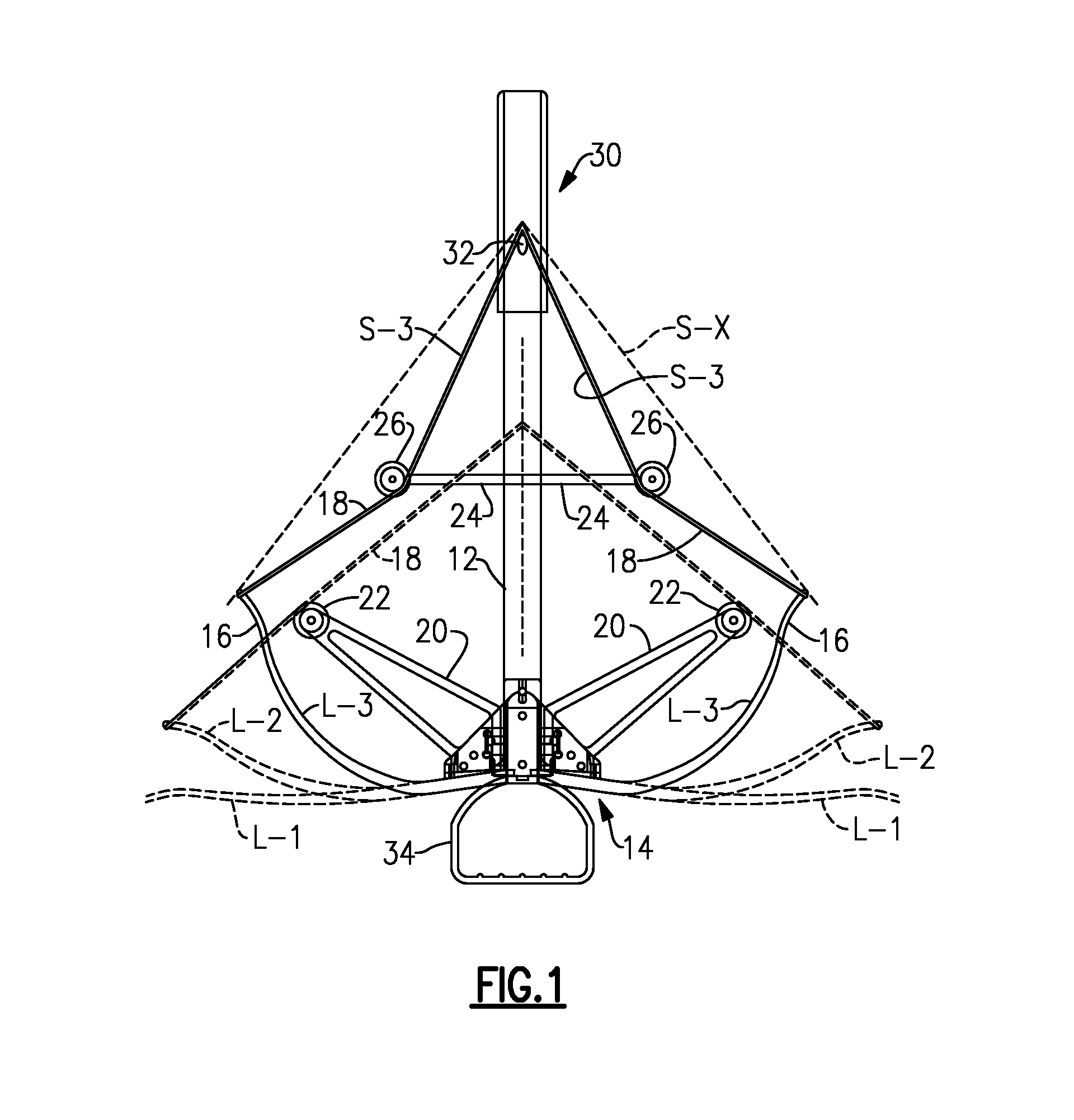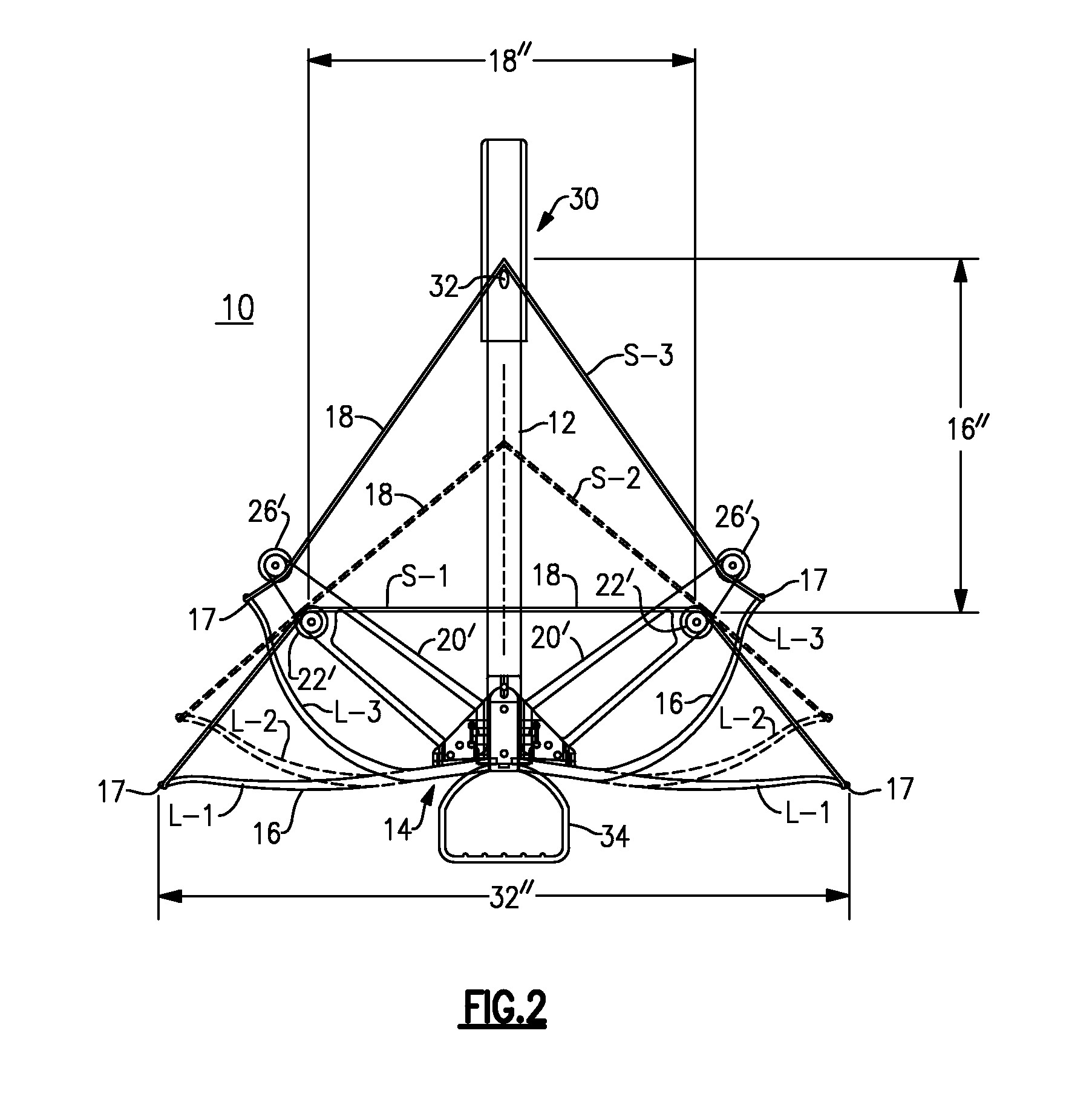Crossbow with bowstring redirection
a bowstring and crossbow technology, applied in the field of crossbows, can solve the problems of difficult to achieve goals, complicated crossbows, and high cost, and achieve the effect of increasing kinetic energy and velocity and increasing velocity
- Summary
- Abstract
- Description
- Claims
- Application Information
AI Technical Summary
Benefits of technology
Problems solved by technology
Method used
Image
Examples
Embodiment Construction
[0014]The invention is explained in terms of a possible preferred embodiment, here a crossbow 10, in which there is an axial beam or stock 12 defining a medial plane with a recurve bow 14 that extends transversely across the front or distal end of the stock or beam. At the right and left of the recurve bow 14 there is a spring limb 16, i.e., a spring limb at the right side and one at the left side. A bowstring 18 is anchored at each end at an eye or anchor point 17 at the end of the respective limb 16.
[0015]As shown in FIG. 1, there is a set of right and left distal struts or pylons 20 in which are mounted left and right redirecting wheels or pulleys 22. These wheels 22 contact the bowstring 18 when the limbs 16 are forward i.e. when the crossbow is fully released. In this embodiment, there is a second set of transverse struts or pylons 24 located farther back along the beam or stock 12 with a respective right and left rearward re-directing wheels or pulleys 26. These wheels 26 are ...
PUM
 Login to View More
Login to View More Abstract
Description
Claims
Application Information
 Login to View More
Login to View More - R&D
- Intellectual Property
- Life Sciences
- Materials
- Tech Scout
- Unparalleled Data Quality
- Higher Quality Content
- 60% Fewer Hallucinations
Browse by: Latest US Patents, China's latest patents, Technical Efficacy Thesaurus, Application Domain, Technology Topic, Popular Technical Reports.
© 2025 PatSnap. All rights reserved.Legal|Privacy policy|Modern Slavery Act Transparency Statement|Sitemap|About US| Contact US: help@patsnap.com



